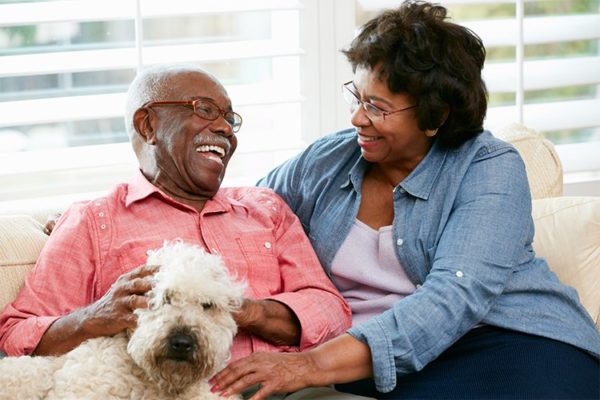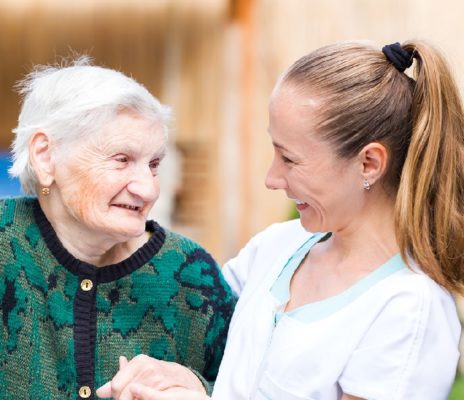Falls are one of the causes of death and injuries in older adults. They are a common cause of traumatic brain injuries, and they may also cause other severe injuries, such as fractures of the hip, that can have extremely negative impacts on quality of life. Here are a few ways in which you can help older adults in reducing falls:
Clear the floor.
Falls happen most often at home, common-sense tips start with removing floor clutter – such as small furniture, throw rugs, electrical cords, and pet gear – that can make people trip. Wiping up spills immediately, using nonslip adhesive strips on stairs and nonskid mats or appliques in the bath and shower make surfaces less hazardous. Above floor level, stair rails on both sides of the staircase provide double protection.
Look out for outdoor falls.
Icy sidewalks, snow-packed stairs, and slick curbs can provoke falls at any age, but older people are more vulnerable to serious injuries. Avoid going out alone on ice or snow if possible, the National Institute on Aging suggests. Ask someone to spread salt or sand on icy surfaces during winter, and if you must go out, wear boots with good traction.
Lighten up.
Proper lighting helps prevent trips and falls. Light switches by all entrances to halls and rooms, fixtures with at least two bulbs in vital areas such as exits and bathrooms, and switches placed in easily accessible locations can reduce accidents in the dark. Flashing porch lights and 911 switches can alert others to someone having trouble in their home.
Let the sunshine in.
Windows provide natural light and boost daytime visibility, so open the curtains and pull up the shades. If you’re remodeling to enable aging in place, plan for plenty of windows. For better access, either uses lower windows or lower sill height. Windows should have low-maintenance exteriors and easy-to-operate hardware.
Build balance.
Regularly practicing gentle yoga is one way for seniors to build balance, prevent falls, and even improve their serenity. Yoga has several advantages: Many senior centers offer free yoga classes, and for those who prefer to practice in privacy, all they need is a mat. However, a 2008 study found two other fitness practices are even better for promoting balance: the ancient discipline of Tai Chi and more-modern Pilates, which focuses on strengthening the body’s core.
Promote healthy eating.
Malnutrition among seniors is considered a hidden epidemic, and findings presented at the 2015 Gerontology Society of America conference show that older adults who don’t eat right are more vulnerable to falls. Seniors are healthier and less frail when following a well-rounded diet with a little extra lean protein, nutrition experts say.
Consider a medical alert system.
The thought of a loved one who falls and can’t summon help because he or she is too injured is every caregiver’s nightmare. Medical alert systems offer seniors a way to instantly get help. Devices can make seniors feel more confident as they go about their day and provide peace of mind to family members at a distance. See the Consumer Affairs list of the top 10 medical alert systems.
Ask for a risk assessment.
Health and caregiving professionals can evaluate a senior’s home environment for safety as part of a comprehensive assessment. Providers including visiting nurses, clinical social workers, and doctors who do home visits are on the lookout for jumbled medications, signs of disorientation, and physical hazards and obstacles in the home.
Evaluate medications.
Certain prescription and over-the-counter drugs can lead to disorientation or reduce the balance. For instance, an older adult taking opioid pain medicines after a surgical or dental procedure is at higher risk for falls. Drugs that increase the risk of falls include certain blood-pressure medications and sedatives like Xanax and Valium. Antihistamines like Benadryl also raise fall risk. Older adults often take a large assortment of medications, and some may interact with others. Talk to your geriatrician or pharmacist to sort out which fall-increasing drugs are no longer needed or to find safer substitutes.
Check eyesight.
Yearly eye checks are important for uncovering and treating problems that reduce vision and raise fall risk. Proper-strength eyeglasses or contact lenses are also a must. One caution: Several studies have found that getting new glasses with a big change in prescription may actually increase fall risk. The magnification from bifocals can make objects appear farther or closer than they really are and distort peripheral vision. So talk to your ophthalmologist or optometrist about how to gradually adjust and safely wear multifocal glasses.




i love this fabulous post
You made a few nice points there. I did a search on the subject matter and found most folks will have the same opinion with your blog. Hermine Paolo Nikolaus
Touche. Outstanding arguments. Keep up the great spirit.| Laurice Burke Tita
Good post. I learn something totally new and challenging on websites I stumbleupon on a daily basis. It will always be interesting to read articles from other writers and practice a little something from other websites. Georgia Yule Mella
Greetings! Very helpful advice on this article! It is the little changes that make the biggest changes. Thanks a lot for sharing! Frances Ephrem Shamrao
I believe that is one of the such a lot significant info for me.
And i’m glad reading your article. But want to statement on some general things, The web site style
is ideal, the articles is in reality nice : D.
Just right task, cheers